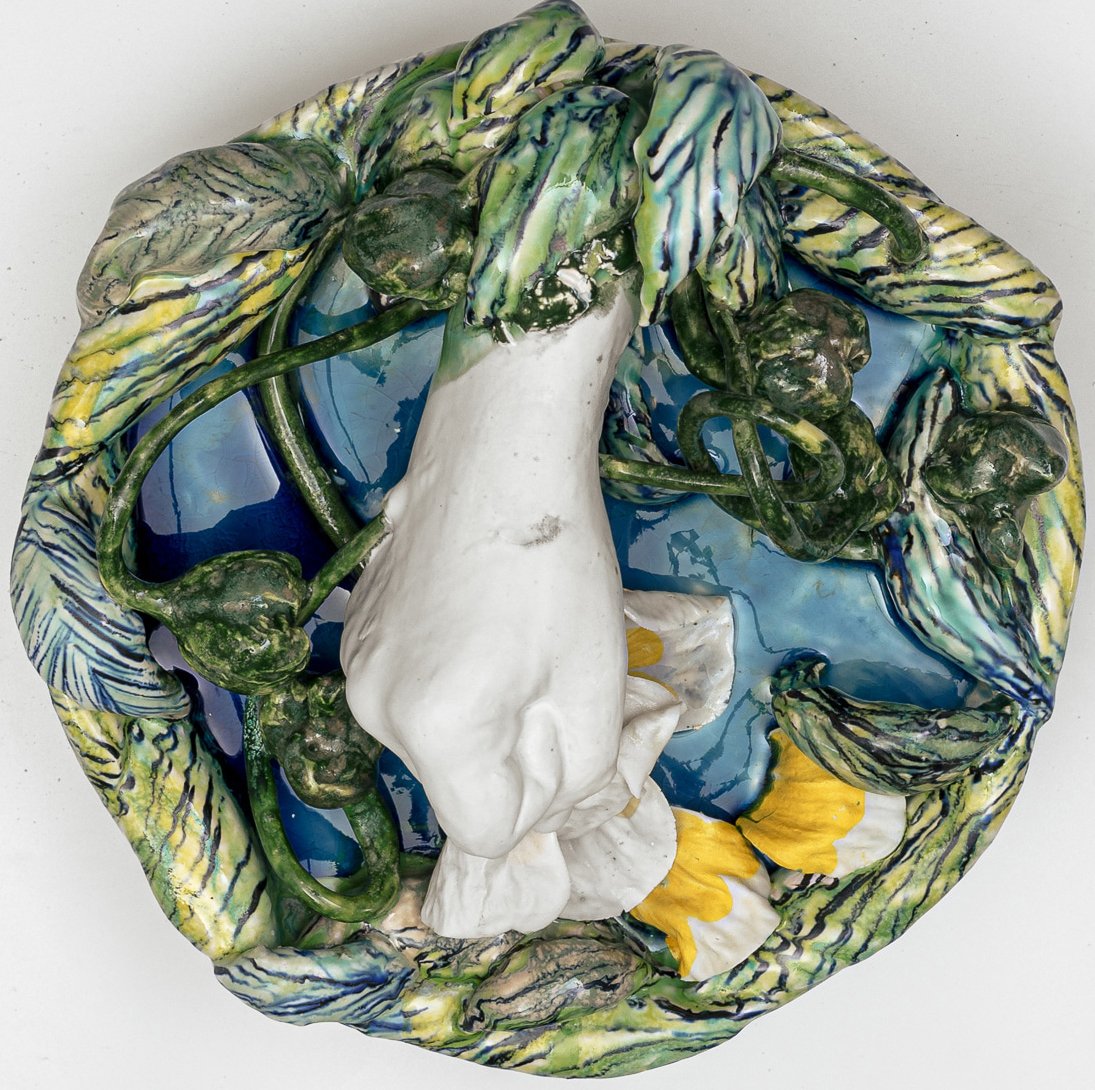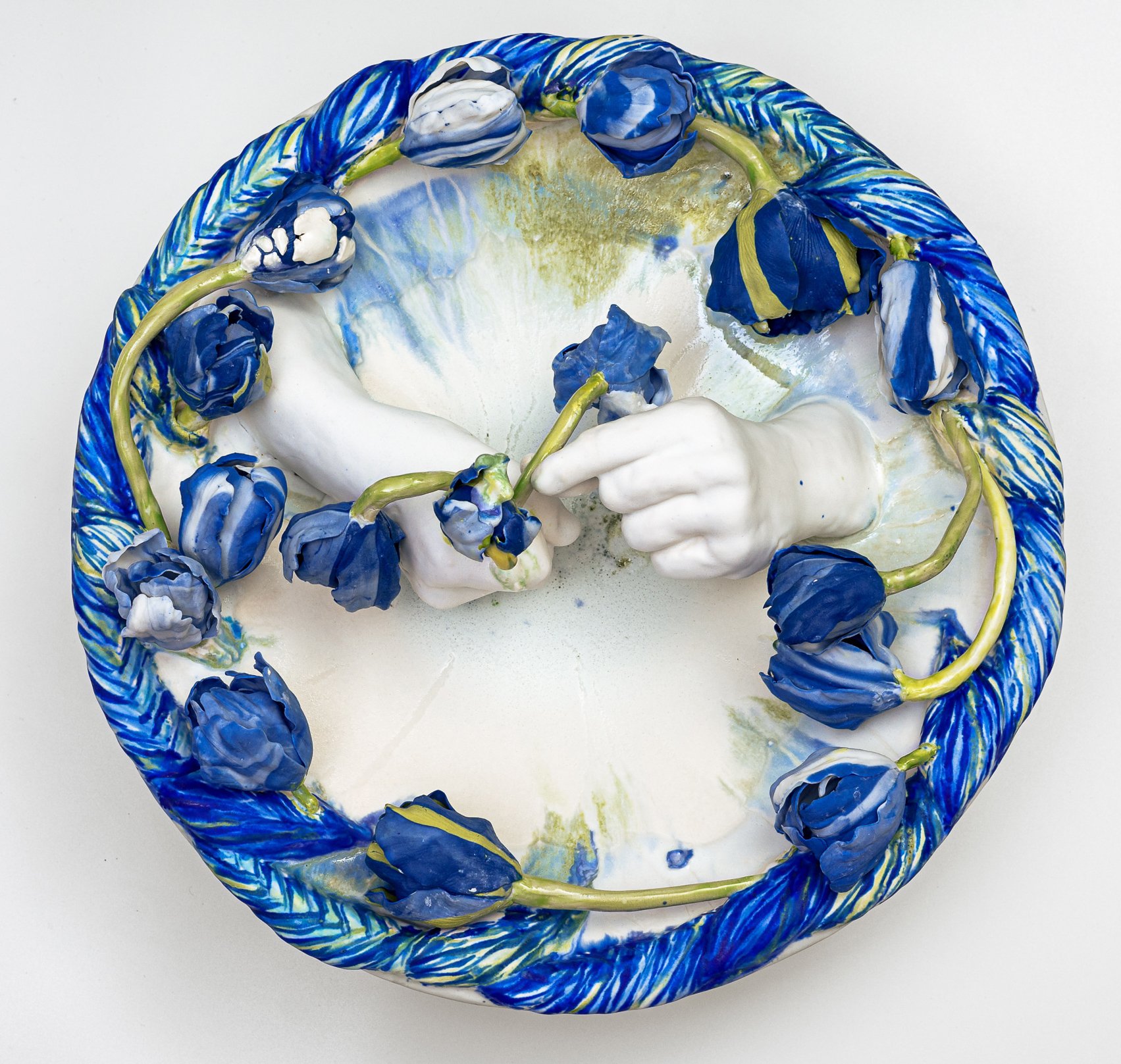Pullulate
2023
Harbourfront Centre, Toronto, ON, CA.
Mural water soluble pigment, house paint
10 m x 3 m x 2.5 m
33 ft x 10 ft x 8 ft
Wall plaques Porcelain, Paper-clay, underglaze, glaze
45 cm x 20 cm
18 in x 8 in
Black Vine photography

They warned us not to pick the Trilliums.


She crushed the flowers and ground the seeds to dust and made a draught for love and one for dreaming.


We gripped at the stems. Us three, together. Daughters of Argos, mad with delirium and seeking our solace in the petals.


Helleborus viridis


The verdant blooms became feral. Pushing. Carefully, so carefully.


We allowed the leaves and the flowers to take us over. After. After, we took them into ourselves.


The vines grew and snaked across, in, and through. They brought about hatred and courage in equal measure.


I took the petal into my mouth. Past my lips, I closed my eyes as it melted across my tongue.


We imagined blue flowers and ripped them, divine, from the earth.


Vines burst from our bones and we became the flowers.







Curatorial Statement
“Long before the series The Last of Us premiered on HBO, Jess Riva Cooper’s work was already pullulating with parasitic plants blooming from orifices and body parts. Her use of lush flora decoration and juicy glazes is compelling, but on closer examination – repelling, revealing an uncanny darker narrative that sends shivers up your spine.
Cooper was raised on a (un)healthy dose of gruesome Grimm’s fairy tales and romps through the woods on the family farm, allowing her imagination to run wild. She developed a love for the strange and mysterious alongside a love for growing things. She came to understand that Mother Nature is a beautiful fecund goddess but not a benign one; that divinity possesses a volatile and downright creepy side.
Cooper’s platters are mashups of ceramic tropes (florals and figurines) and styles ranging from pre-Renaissance to Victorian. She’s cultivating her own genteel, little-shop-of-horrors. Do not be fooled – her use of “pretty” flowers is deceptive; they’re actually avatars for the not-so-beautiful, cordyceps (caterpillar fungus), more commonly known as the zombie parasite.
Cooper’s work is a commentary on humans’ relationships with nature, much of it oppositional. We champion (and rightly so) the preservation of green and wild spaces but are repulsed by some of the terrifying things that live there, like Goliath Birdeaters (spiders) or even the humble leech. We desire the verdant field overflowing with abundance, yet are accountable for vast hectares of invasive growth, (deviously attractive), like crown vetch or purple loosestrife that rapidly disrupts chokes and destroys native species.
As humans continue to put pressure on the planet, Cooper finds it chilling and somewhat satisfying to speculate what nature’s revenge will look like when it’s unleashed upon the blatant perpetrators, responsible for the climate crisis and environmental degradation.”
– Melanie Egan, Director of Craft & Design, Harbourfront Centre, September 2024
